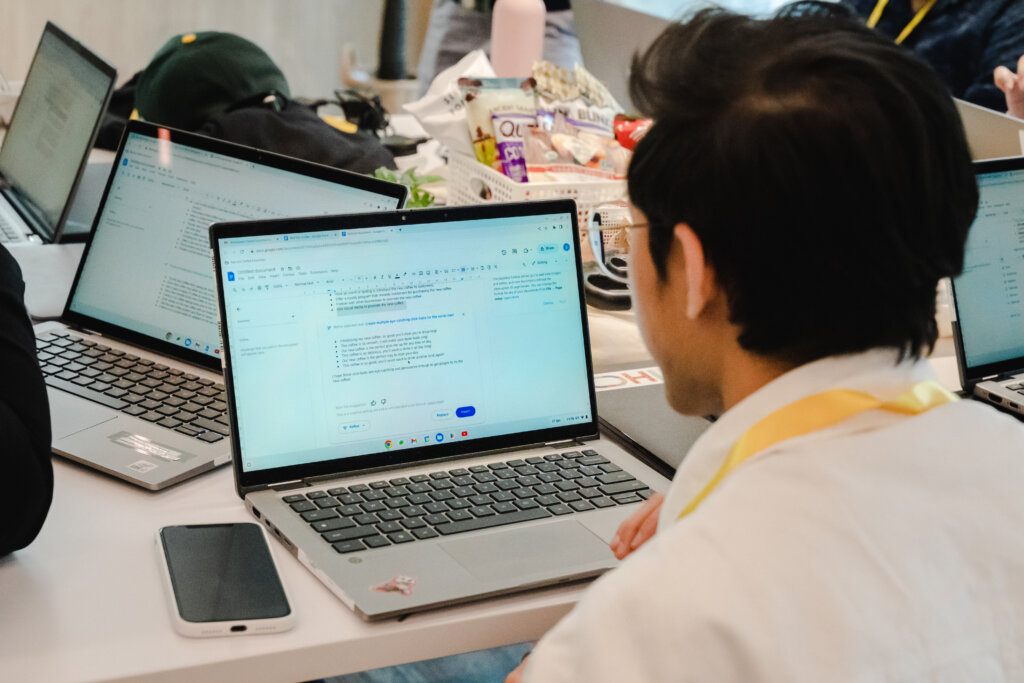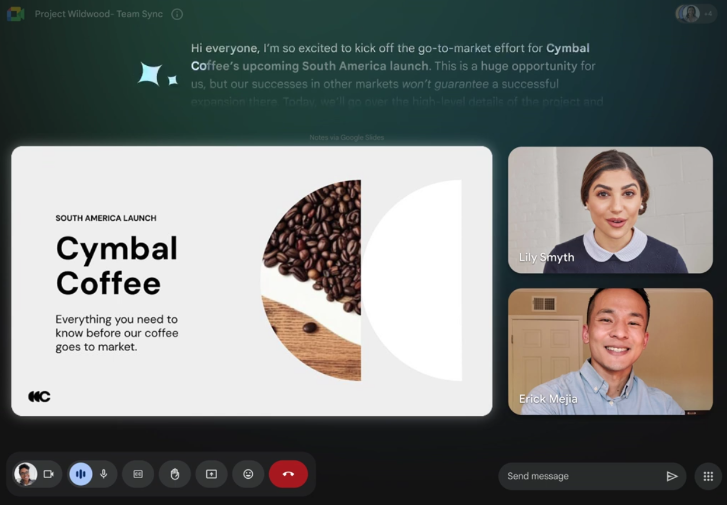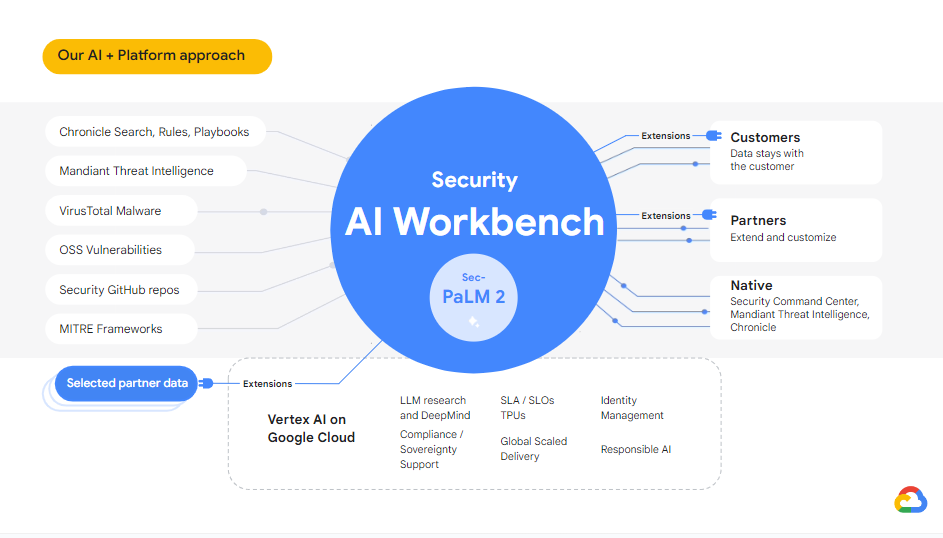
- Google Cloud highlights generative AI’s industry-wide impact at the SEA summit.
- Google’s generative AI redefines retail with personalization and innovation.
- Google leverages Vertex AI and unique data to enhance generative AI’s potential.
Google Cloud’s recent Generative AI SEA media summit in Singapore served as a platform for showcasing its latest innovations. The event, though not the first of its kind, offered participants an immersive journey into Google’s advanced AI offerings, including interactive sessions with Google’s AI instruments.
When discussing generative AI, Mitesh Agarwal, Google Cloud’s APAC managing director for solutions and technology, referenced a thought from ex-Google researcher Andrew Ng, who likened AI to “the new electricity.” For Agarwal, this new ‘electricity’ requires a metaphorical ‘grid’ for support, which he equates to the cloud, and a form of ‘fuel’ — a steady flow of data clouds.
Agarwal posed thought-provoking inquiries, contemplating the industries poised for transformation and the impact on individuals. He said that while no AI model can predict the future accurately, specific sectors will undergo total transformation, and others will evolve to survive. One thing is certain: the ripple effects of AI will enhance productivity and alter existing experiences.
This change is conspicuously visible within the retail industry.
Evolving the retail industry with Google and its generative AI innovations
The impact of generative AI in retail is becoming increasingly evident as it’s harnessed to improve and expand various functions within the industry, revolutionizing how employees and customers experience retail.
Amy Eschliman, part of the leadership at Google Cloud’s Retail Solutions Strategy, emphasizes that while technology evolves, it doesn’t erase the foundational elements of retail’s value proposition. Instead, the right technological tools, like generative AI, can enhance workforce productivity and deliver more efficient and impactful core services.
Beyond just being a trending topic, generative AI represents a novel avenue of value for retail business leaders, standing out from earlier AI technologies due to its user-friendly nature and practicality in solving daily challenges. Its adaptability allows anyone familiar with basic search engine queries to engage with AI-driven systems for various tasks.
Top-tier companies are adopting generative AI to address some of their most frequent and time-consuming issues. McKinsey predicts that three-quarters of the value derived from generative AI will benefit areas such as customer handling, marketing, sales, software development, and research and development.
In the retail sector, transformation is essential and highly competitive. Consumers demand instantaneous, personalized services like real-time recommendations and smooth omnichannel shopping experiences. Generative AI is pivotal in fulfilling these expectations and offers internal advantages, including operational efficiency and enhanced employee experiences.
Eschliman points out five potent uses of generative AI in retail, emphasizing its substantial potential to redefine the industry’s landscape.
Innovative content generation
Generative AI is revolutionizing retail, with 73% of consumers expecting brands to know their preferences preemptively. Google Cloud enables the efficient creation of personalized, engaging content, saving time and costs while fostering innovation, strategic planning, and stronger customer relationships.
AI-driven interactive shopping
Retailers are utilizing generative AI to enhance online shopping with virtual stylists, offering personalized fashion advice and addressing the costly issue of search abandonment. These AI aids improve customer engagement and influence purchase decisions, tackling the global issue where only 10% of consumers find what they’re searching for online.
Revolutionizing catalog creation
Generative AI streamlines catalog management by generating high-quality images, speeding up categorization, and crafting customer-centric marketing copy. It addresses traditional hurdles like obtaining vendor images and simplifying product sorting, which is crucial for the 92% of consumers who prefer easily searchable products.
Accelerated product innovation
Generative AI fast-tracks product development by gleaning insights from various data, reducing R&D costs, and swiftly identifying viable product concepts. It aids in internal market research and the rapid creation of textual and visual content for products, enhancing innovation efficiency.
Enhanced customer support dynamics
Generative AI bolsters customer service by assisting representatives with real-time responses and optimizing operations. It supports multi-channel engagement, crucial in a landscape where 75% of consumers use various channels, ensuring comprehensive, immediate, and empathetic customer support.
What sets Google apart in the generative AI realm?
At a recent summit, the inevitable question was raised: “What makes Google’s AI superior to others?” Agarwal believes foundational models, like those by Google, OpenAI, Meta, and others, will eventually be universally accessible.
“Everyone will have access to foundational models. You all have access to these foundation models, except that you might not be aware of it,” he said. “For instance, when using Bard, you are essentially accessing Google’s PaLM model. Consequently, companies are asking, ‘What is the differentiator if everyone has access to the same models, assuming they can afford them?'”
According to Agarwal, the key lies not just in the foundational AI models but in the distinctive data used to train them. Standard applications like Bard fall short; companies need to harness their unique data for genuine value, as seen with BloombergGPT’s use of proprietary trading data. The secret to success is training these advanced models with specialized data, for example, transforming interactions between a bank and its clients into valuable insights and practical actions.
Embracing this concept, Google introduced Vertex AI Search and Conversation, previously known as the Generative AI App Builder. This platform allows developers to construct AI-driven chat interfaces and digital assistants quickly, with minimal coding, ensuring robust control and security.

A demo of Vertex AI in action.
Vertex AI Search offers the capability to create search functions comparable to Google’s own, powered by foundational models and capable of focusing solely on a company’s data or enhancing the model’s initial training. On the other hand, Vertex AI Conversation aims to create chat and voice bots resembling human conversation, using foundational models and supporting audio and text.
With Vertex AI, Google introduces the Model Garden, a hub where developers can choose from over 100 foundational models for their needs, including Google’s own, like Imagen. This model lets organizations produce and customize high-quality images at scale, with the assurance of copyright protection.
Ownership in the digital age
This protection prompts questions about ownership: how do users claim it, and what exactly do they own?
Agarwal points out Google’s use of ‘Synthetic ID’ embedded in image metadata, similar to blockchain’s NFTs. “Google has incorporated Synthetic ID into imaging technology, letting users substantiate ownership. This integration achieves several objectives: first, it authenticates ownership through metadata unique to the user; second, it ensures that copyright information is included; and third, it verifies whether the content was AI-generated, as distinguishing this is often a requirement,” he explained.
Soon, Google Meet users will see AI-enhanced video quality, addressing issues like webcam-induced blurriness. Google also deploys AI for a ‘professional studio’ experience, improving video call lighting and quality.
Additionally, ‘automated translated captions’ will support over 300 language pairs in real time, offering post-meeting transcripts in both original and translated languages. A ‘real-time teleprompter’ will assist presenters, and the ‘Take Notes for Me’ feature will record meeting minutes, categorizing video segments by discussion topics.

Real-time teleprompter coming out soon. (Source – Google)
The innovative ‘Attend for me’ feature allows your avatar to attend meetings, posing predetermined questions and sharing insights afterward—a temporary stand-in courtesy of Google AI!
Google’s AI-driven strategy for cybersecurity
Our sister site, Tech Wire Asia previously highlighted Google’s adoption of Duet AI in its cybersecurity strategies, a move aimed at delving deeper for insights and fortifying threat management. With AI continually evolving and new threats surfacing, human judgment remains indispensable in decision-making.
Mark Johnston, the director of the Office of the CISO, Asia Pacific, at Google Cloud, emphasized the irreplaceable aspect of human intuition in decisions, offering insights AI can’t replicate. The system is architected to learn and adjust to the distinct demands and operational subtleties of each organization. Data put into Google Workspace stays protected and isn’t disseminated across different platforms, preventing the dilution of organizational particulars, which could precipitate potential risks.
Earlier in the year, Google Cloud unveiled AI Workbench, a platform powered by a dedicated security LLM, Sec-PaLM. This framework operates like an automated policy enforcer, undertaking roles traditionally reliant on humans. Companies that engage Google Workspace receive support from an ever-evolving platform fortified with essential regulations, rules, and defensive strategies, all AI-coordinated to shield against emerging threats.

How Google Cloud Security AI Workbench works. (Source – Google)
Johnston acknowledged the foundational role of Google’s expansive research and threat intelligence in shaping its AI model. This model receives a steady influx of up-to-date data to counter threats effectively and is integrated with diverse compliance protocols, policy adaptations, and standards that hone the AI’s learning trajectory.
This progression is ceaseless, with the AI framework being persistently refined and educated with the freshest data. Advancements are accessible through resources like VirusTotal Code Insight, enhancing its prowess in detecting and dissecting malware, and large language model breach analytics, facilitating the identification of complications in emerging data collections. Google’s Mandiant division is also involved, probing security data for any deviances.
Activities executed by Duet AI, coupled with the security operations suite, supply exhaustive instructions on the measures to enact in diverse incident frameworks or playbook situations.
Google’s newest AI utilities are crafted to cater to businesses’ immediate needs while paving the way for inventive and efficient methods to exploit the AI epoch’s potential fully.









